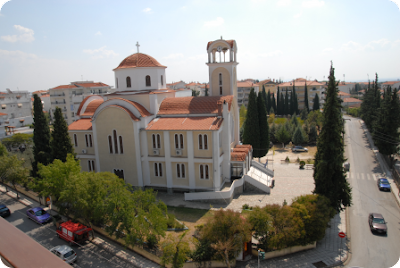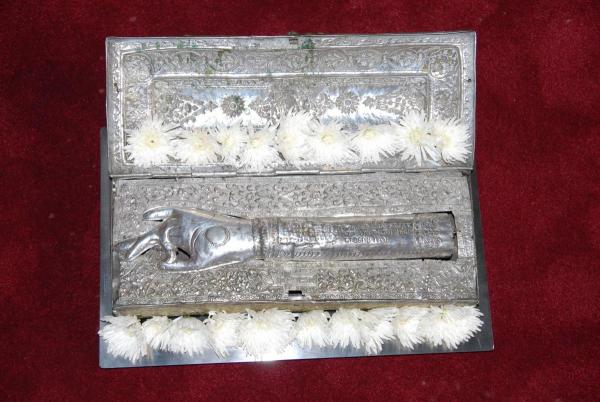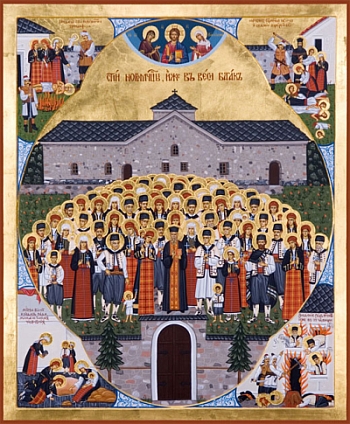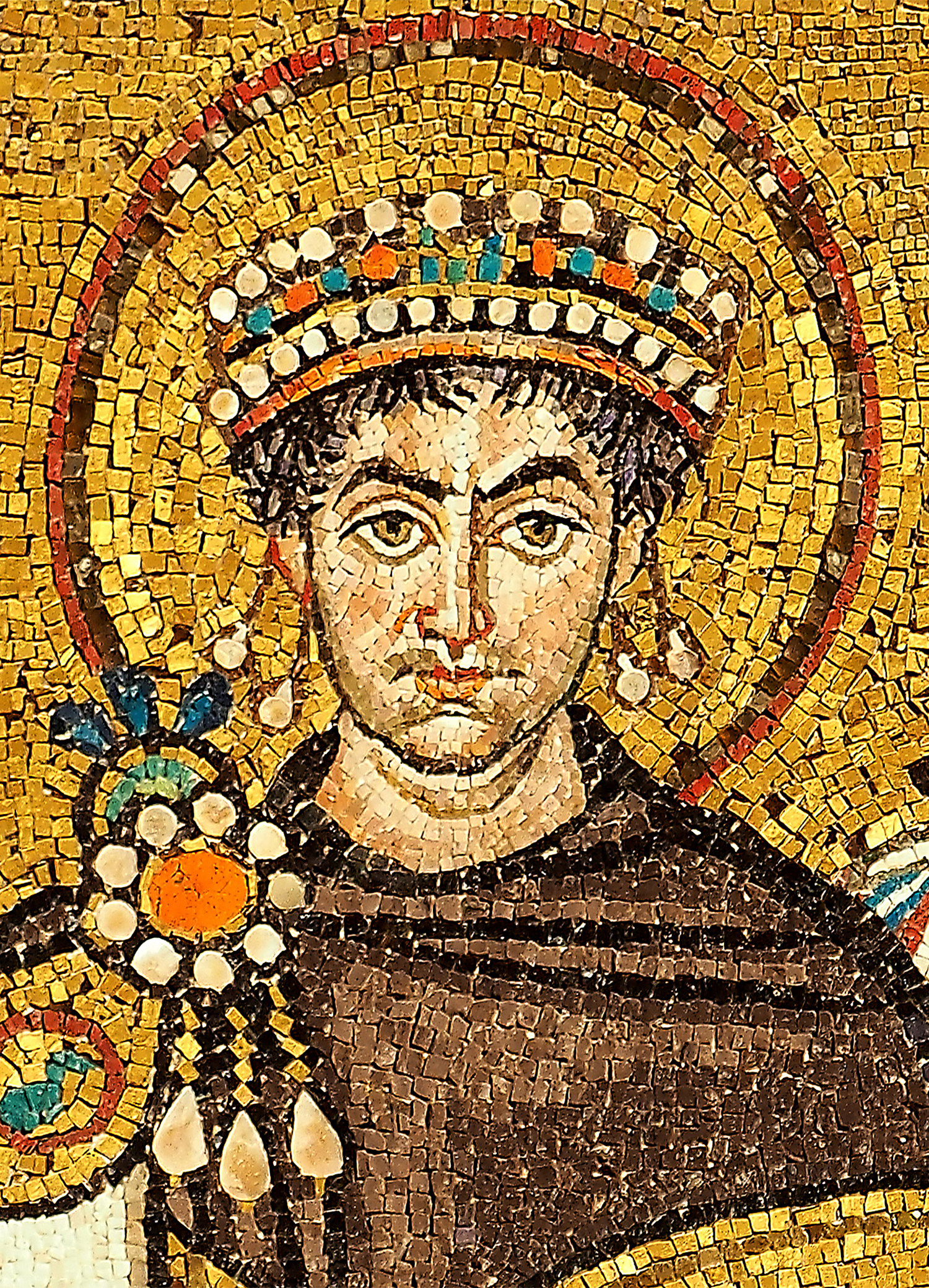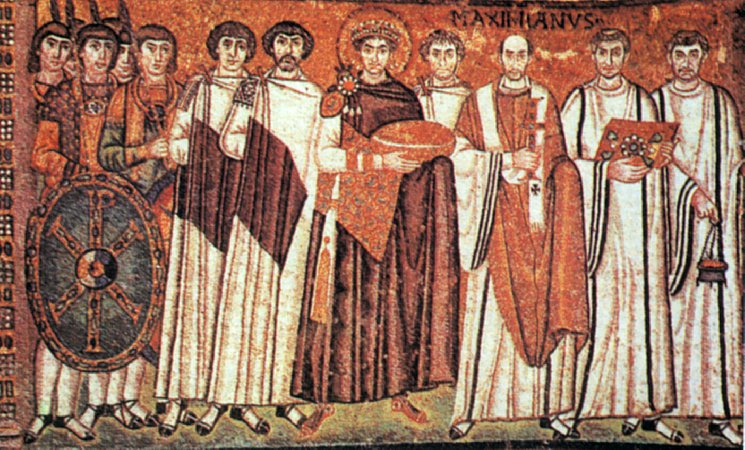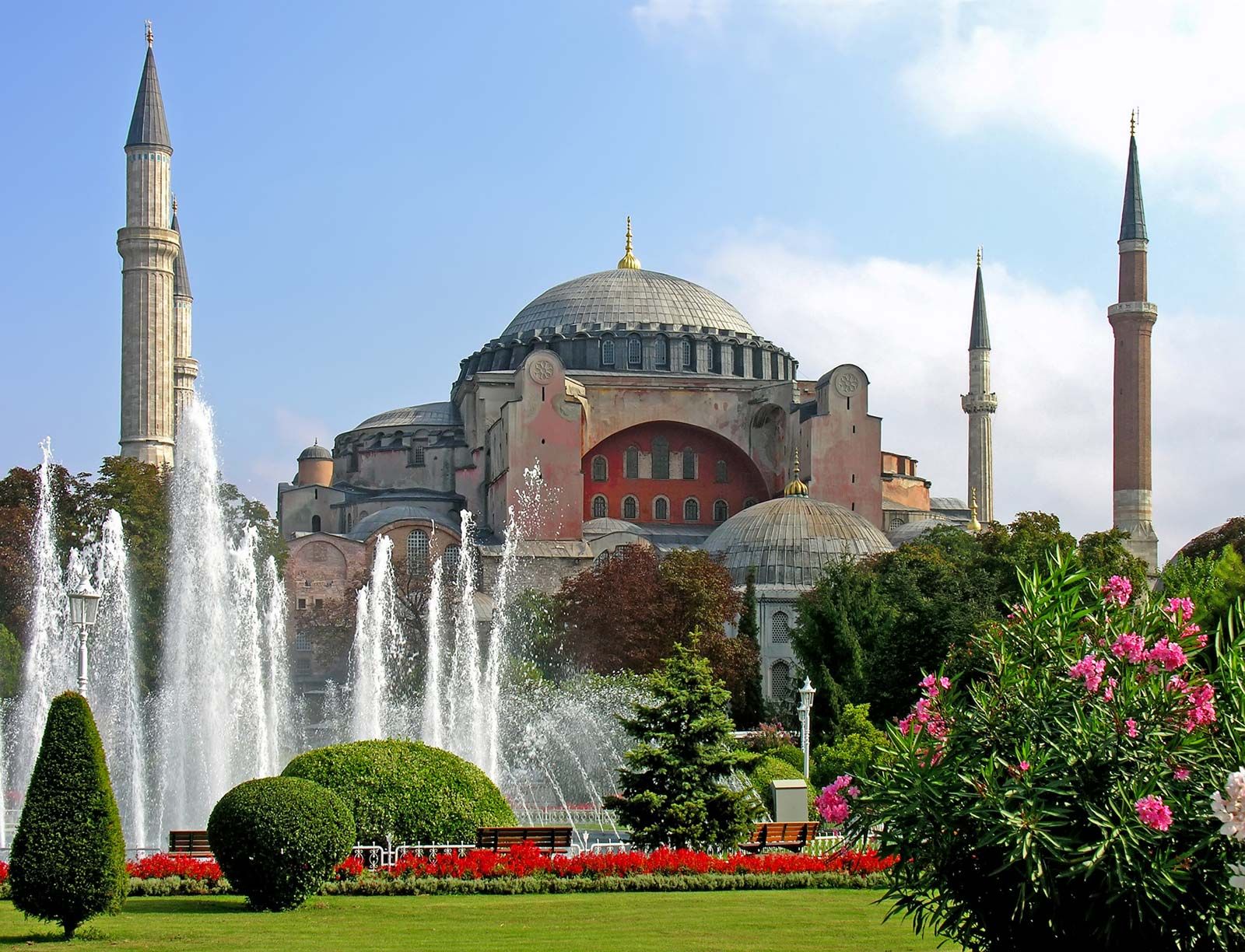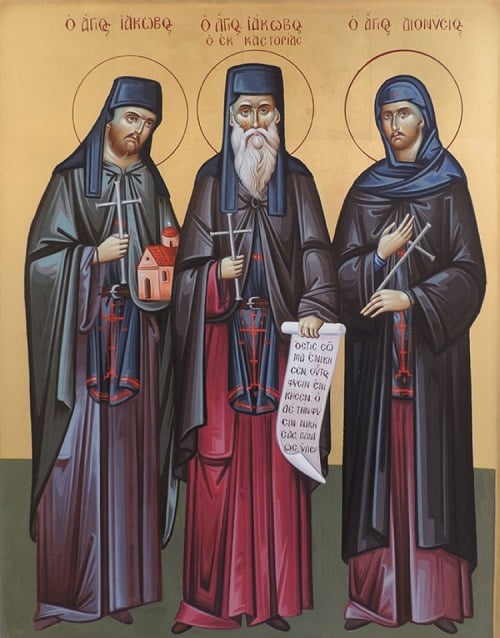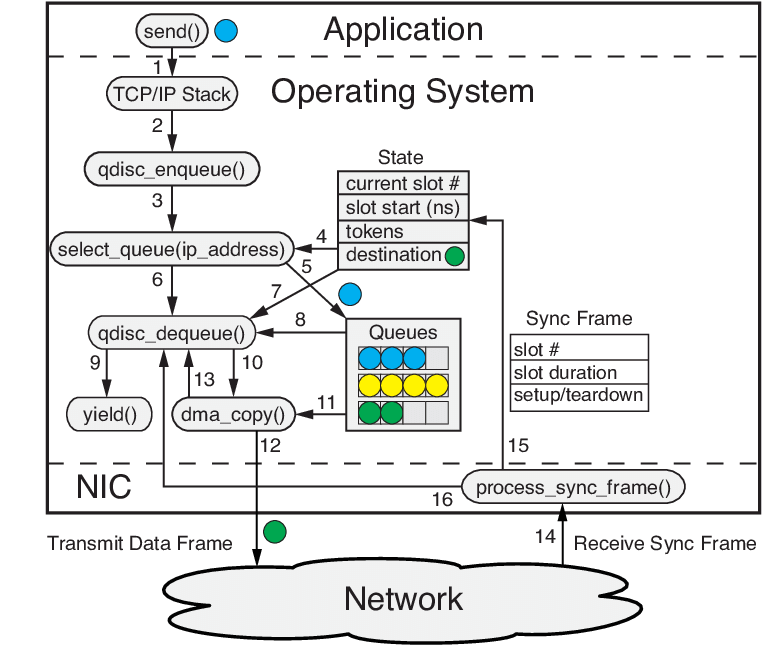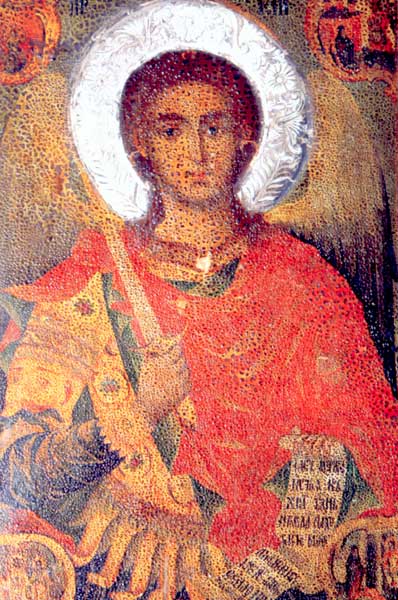
Saint Archangel Michael (Church of Saint Archangel Michael Tryavna, Bulgaria) iconographer Yoanikij Papavitanov
On 8th of November in the Bulgarian Orthodox Church, we celebrate the day to remember the gathering of Archangel Michael with all the Angels Archangels, Cherubims and heavenly powers that have kept loyal to the Holy Trinity God – The Father, The Son, and The Holy Spirit.
The same arch-angels and powers who could do what they want and were created in the beginning of time after God as a helper Spirits to God and man.
The same angels are also supporting the whole universe with their deeds of love. They sustain the waters, make the wind blow, the clouds to move and give rain, the earth to give its fruits, possess and give wisdom or transfer secret messages from God to man when sent.
Others do protect all Christians and people from the evils of the fallen-agels who choose to misobey the True God Christ and follow the master of the evil spirits whose place is in the burning Gehenah and whose time is running out.
They help the woman in birth-pain (like my sister Stanimira whose time to give birth is approaching), the make the organism of man to function properly. Or give the physics to make the stars shine on heaven, the Planet and heavenly bodies to move. Each and every place and Country and Church has its own guardian angels. And they're of a Big multitude the Church fathers says a lot about the Angels and many is still unknown and will be revealed in the that everyone will stand on the Judgement day in front of God and sees the Heaven and Hell realities and will stumble in fear seeing the gloriness of the archangels and cherubs (burning out of Love for God and man) made in a likeness of the Holy God.
The orthodox Church sticks clearly to the teaching of so called saint Dyonisious the Areopagites (often called in the Theology Pseudo Dyonisious), who was one of the important apostles of Christ, Athenian judge at the Areopagus Court in Athens, who lived in the first century. A convert to Christianity, he is venerated as a saint by multiple denominations.
The writings of Saint Dionysius the Areopagite hold great significance for the Orthodox Church. Four books of his have survived to the present day:
On the Celestial Hierarchy, On the Ecclesiastical Hierarchy, On the Names of God, On Mystical Theology
In additional, there are ten letters to various people.
The book On the Celestial Hierarchies was written actually in one of the countries of Western Europe, where Saint Dionysius was preaching. In it he speaks of the Christian teaching about the angelic world. The angelic (or Celestial-Heavenly) hierarchy comprises the nine angelic Ranks:
- Seraphim
- Cherubim
- Thrones
- Dominions
- Powers
- Authorities
- Principalities
- Archangels
- Angels
The account of the Synaxis of the Bodiless Powers of Heaven is located under November 8.
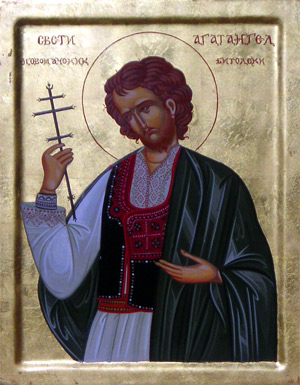
The purpose of the divinely-established Angelic Hierarchy is the ascent towards godliness through purification, enlightenment and perfection. The highest ranks are bearers of divine light and divine life for the lower ranks. And not only are the sentient, bodiless angelic hosts included in the spiritual light-bearing hierarchy, but also the human race, created anew and sanctified in the Church of Christ.
There is too much to be said about Angels, Archangels, through the years from ancient times, they can heal and help, and grant special powers to man and many, many more. There were innumerable heresies who have over-deified heavenly powers, especially gnostics and that is a well known fact. For those who want to read about Angels, and their hierarchy there is a lot ot read and learn, angels has helped the saints in their hardship in fight with evilness, there is really a lot about this for those who want to further learn.
But what is less known is here in today's relatively small country of Bulgaria, we have a local saint Angel of Lerina who is born in Bulgarian family and stems from a Bulgarian village. As his endeveour and confession of his love for Christ and the Church was enormous he has suffered martyrdom for Christ in the 17th century during the times Bulgaria was enslaved by the Ottoman Turks. Thus as there is not much written about saint Angel Lerinski (Lerina), I dedicated this small article in glory of his memory. The article is also in memoriam of my grand-grand-grand Father who was also named Angel himself, perhaps in glory of Saint Angel of Lerina.
The Life of Saint Angel of Lerina
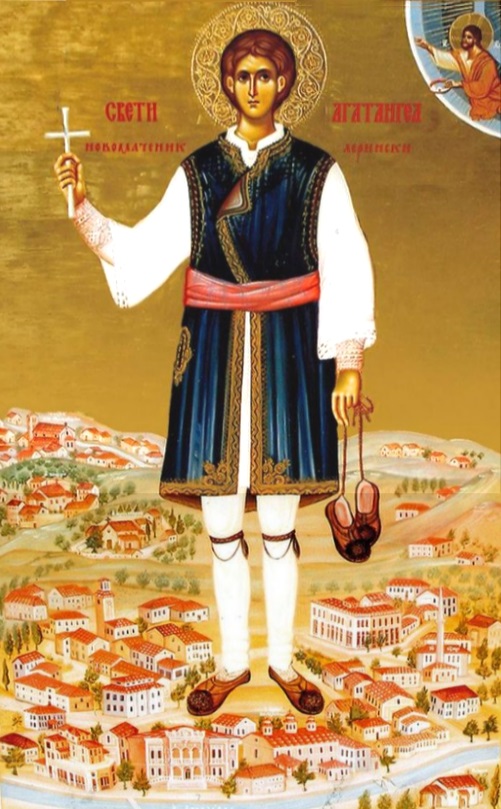
Saint New Martyr Angel of Lerina (Bitolski) – picture source Wikipedia
All the sources about the holy martyr Angel of Lerinsky that we have reached cite the story of Saint Paisius of Hilendar as the main source for the life of the new martyr, called Angel or Agathangel. This is what St. Paisius writes about him in the History of Slavonic Bulgaria":
"In 1750, in Bitol, where the Turkish and Macedonian Pasha sits, the Turks tortured and beheaded a young man, handsome in face and stature, for the Christian faith. Many forced and tormented him to renounce Christ, but he wisely and courageously denounced their godless faith. The Bishop of Bitola recorded many of his answers, described his sufferings in Greek. And God showed a great sign over his powers. His name was Angel from the village of Lerin. This holy martyr Angel shone in our time in the Bulgarian land."
The Bulgarian Orthodox Church honors the holy new martyr on November 8, the feast of the holy Archangels. Probably the veneration of the saint in our church dates from the time when he was martyred, because his martyrdom was described by Saint Paisius of Hilendar immediately after it happened, since Saint Paisius was his contemporary.
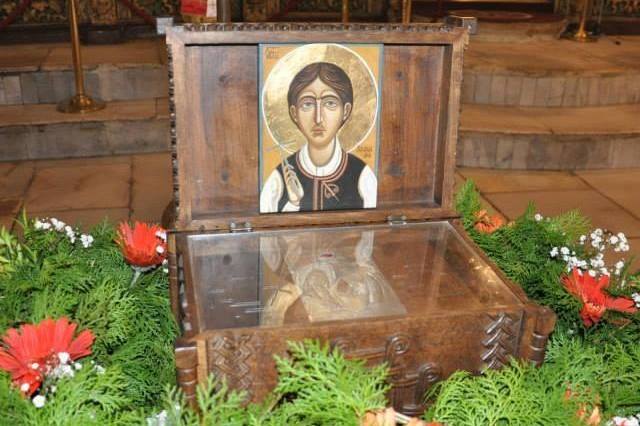
Greek information about the new martyr Angel Lerinski appeared only in recent years.
In the electronic version of "Οι Νεομάρτυρες της Булгариас" (New Martyrs Bulgarian) Αρχιμανδρίτου του Οικουμενικού Θρόνου Θωμά Ανδρέου Ιεροκήρυκος Ιεράς Μητροπόλεως Ελευθερουπόλεως (Archimandrite of the Ecumenical See Thomas Andreu, Preacher of the Eleftheroupolis Holy Metropolis), Kavala, 2011, p.88, we read :
"Another case of a new martyr of Greek origin is that of Angel (or Agatangel) from today's Florina (in Bulgarian Lerin). The 2009 calendar of the Holy Metropolis of Florin, Prespa and Eordei honors this new martyr, who was martyred in the monastery of Pelagonia (now Bitola, Macedonia) on February 17, 1727*. The book "History of Slavonic Bulgaria" by Paisiy Hilendarski talks about the martyrdom of the new martyr ("his name was Angel or Agatangel and he was from the village of Florina")
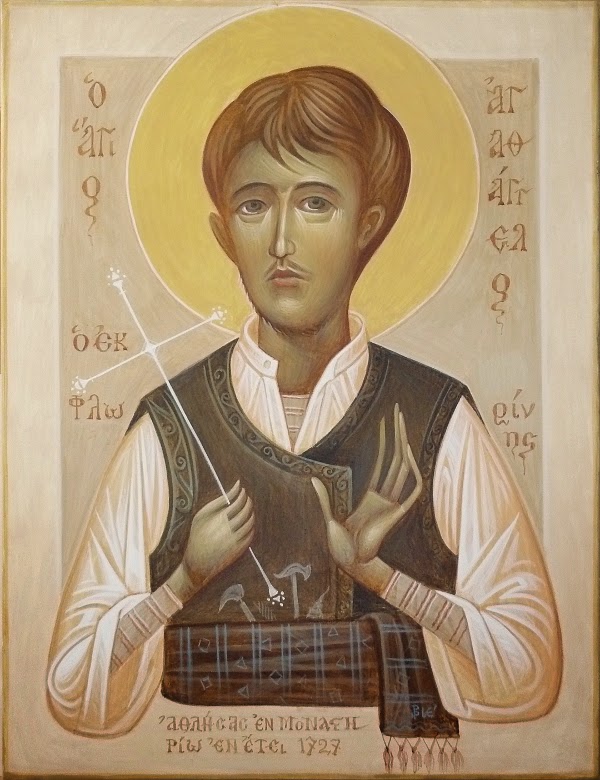
…..
Little is known about the new martyr. We know that he was born in 1732 in Florina, in the sanjak (prefecture) of Bitola (Monastery). When he grew up, he became a tall and handsome young man. At the age of 18, the Turks tried to convert him to Islam, but Angel – although very young – did not succumb to the temptations and then bravely accepted martyrdom. In his book Paisius Hilendarski mentions that: "In 1750 in the monastery… the Turks tortured and slaughtered a handsome young man because of his Christian faith… His name was Angel and he was from the village of Florina" His testimony in the monastery was attended by the local Greek metropolitan, who described his courage and the intelligent and logical answers he gave in court. Due to the fact that he condemned the Muslim faith with particular wisdom and courage, he was beheaded when he was only 18 years old in 1750. The Bulgarian Orthodox Church honors his memory on November 8, during the Feast of the Archangels…."
Additional information about the holy new martyr Angel Lerinsky can be found on one of Florina's sites (http://agiospanteleimonas-florina.blogspot.com/2010/06/blog-post_8186.html.)
The Metropolitan of Florini, Prespa and Eordaia, Theoclitus, addresses the citizens on the occasion of the decision to start the veneration of the holy martyr Agathangel of Florina (June, 2010):
"With special feelings of joy, emotion, holy contentment and reverence, I turn to you, the blessed children of the Greek Macedonian land, to become participants in the great spiritual joy experienced by our local Church for the first official celebration of the memory of the holy new martyr Agathangel in the seat of our metropolis Florina. It is already known to all of you. that the holy new martyr Agathangel, martyred in the Pelagonian monastery, originated from Florina, is our fellow citizen. At an early age he left Florina and went to Vutelion of Byzantium, to the monastery, seeking better living conditions. There, exercising the profession of shoemaker, he soon distinguished himself by his honesty and his diligence. …. But what distinguished him from the young people of his time was the pure and firm faith he had in Christ and in His "orthodox church". He loved Christ more than anything else in his life. No other love could "steal" the love that Agathangel had in his heart for Christ, he loved Him simply, purely, with all his heart, with all his strength, he loved Him as his poor parents and his blessed ancestors loved Him.
Along with the love for Christ, the saint had love for his homeland, conquered Macedonia. Almost four hundred years of slavery count the long-suffering "Greek Macedonians".
The Turkish conquerors treated them with cruelty. Sometimes with flattery, sometimes with threats, sometimes with violence, they try to make them change their faith. To deny Christ. To renounce the Orthodox faith and become Muslims.
And whoever renounces his faith renounces his homeland.
Agathangel's heart was troubled by the fact that several of his fellow Roman Christians did not withstand the temptations or the violence, denying Christ and the country. His brave heart rebelled. He could not bear the Orthodox faith to be dishonored. For this, when during the three-day Bairam, which is celebrated after Ramadan, the forced conversion of the Orthodox increased, this young boy, not yet twenty years old, went to Constantinople, where he received a Sultan's firman, which forbade the forced conversion in the area of Pelagonia.
On his return to the Monastery, the saint was arrested by those outraged by the Turkish Sultan's decision, and after cruel torture, he was beheaded on February 17, 1727.
In a meeting we held in the Holy Metropolis, in which, in addition to the Metropolitan, the Honorable Prefect of Florini Mr. Ioannis Voskopoulas, the Mayor of Florini Mr. Stefanos Papanastasiou, the President of TEDC of N. Florinis, Mr. Dimitrios Iliadis, and the President of the monasteries of N. Florinis, Mr. Theodoros Vosdou, decided to jointly hold events in honor of the holy new martyr Agathangel…”
* 1727 is mentioned as the year of the martyrdom of St. Angel Lerinski in some sources, and sometimes it is mentioned together with 1750, in the same source. This discrepancy in the years of the martyrdom leaves the doubt that different martyrs are being talked about.
For this reason, we cannot say exactly whether the reliquary with the relics – the holy head of the new martyr Agathangel in the Kykkos monastery in Cyprus, which contains the same description of his life, but the date February 17, 1727 is indicated, refers to the same martyr, for which speaks Saint Paisius of Hilendar.
![]()
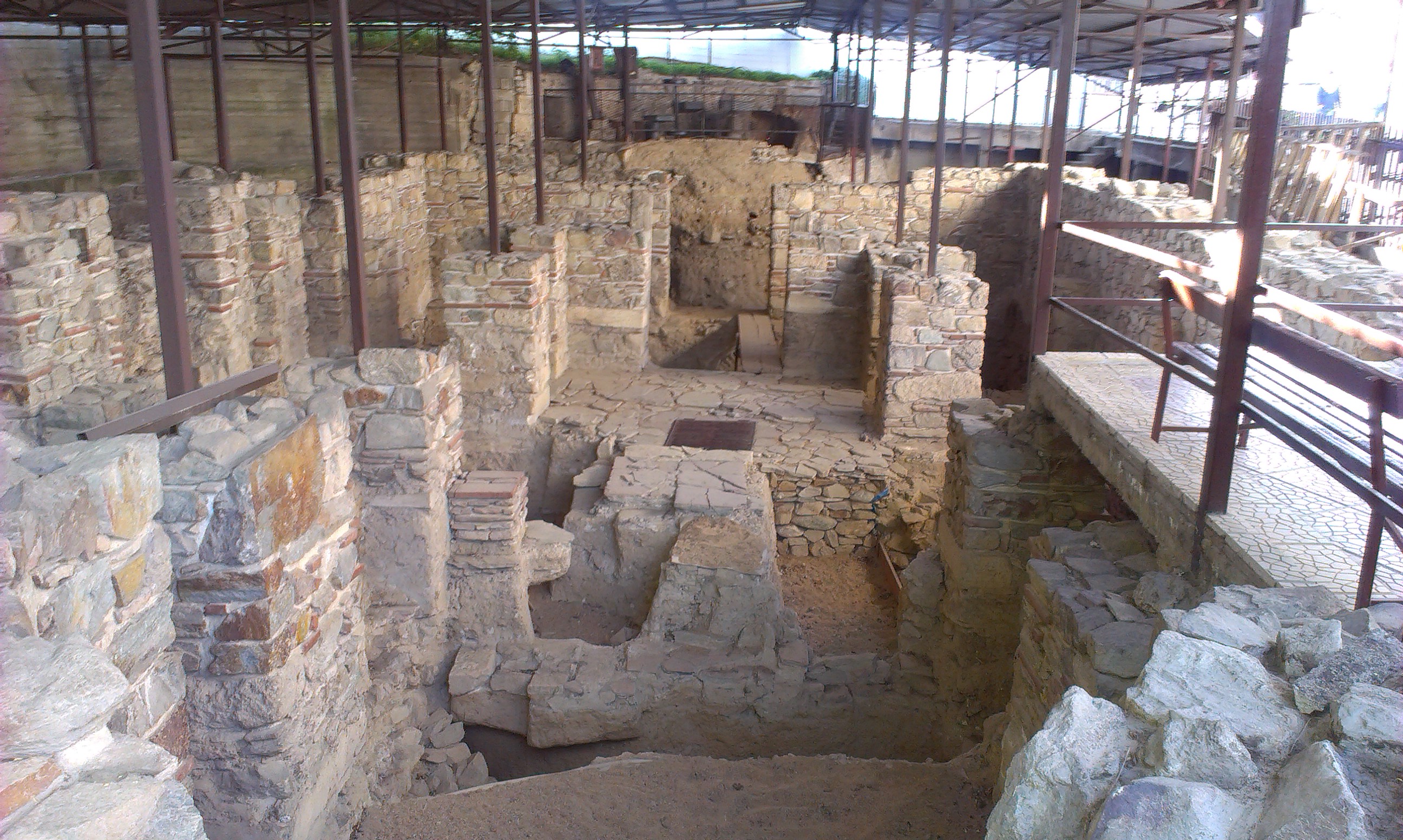
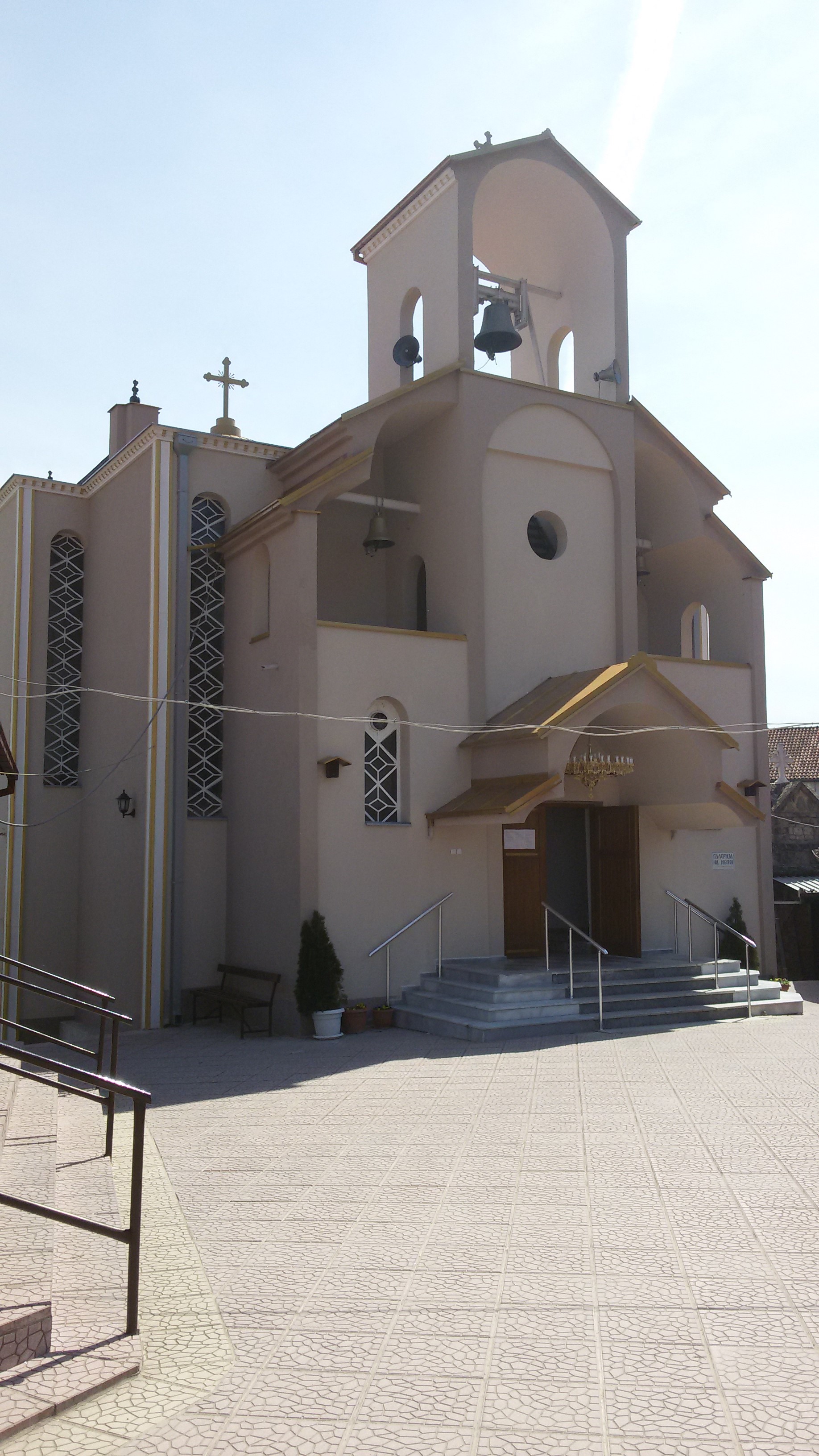
![]()
